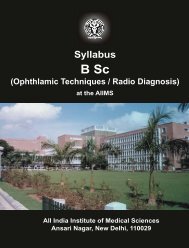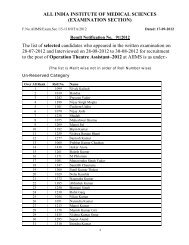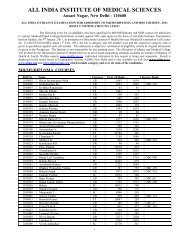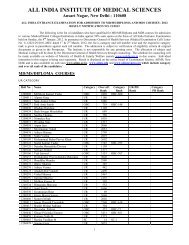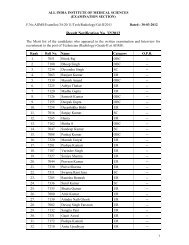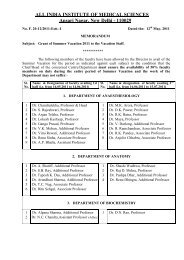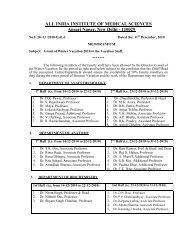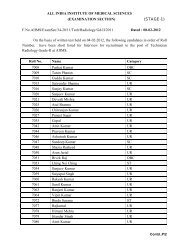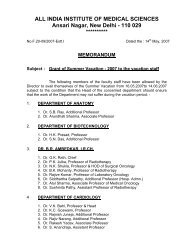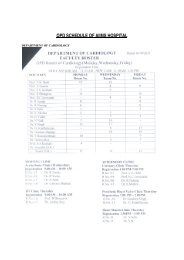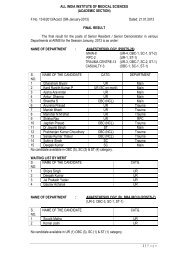Manual for long-term pharmacotherapy - All India Institute of Medical ...
Manual for long-term pharmacotherapy - All India Institute of Medical ...
Manual for long-term pharmacotherapy - All India Institute of Medical ...
You also want an ePaper? Increase the reach of your titles
YUMPU automatically turns print PDFs into web optimized ePapers that Google loves.
Pharmacokinetics<br />
Absorption <strong>of</strong> disulfiram from the gastrointestinal tract is rapid but incomplete and approximately 20% is<br />
excreted in the faeces. Because <strong>of</strong> its high lipid solubility, disulfiram is widely distributed and accumulated in<br />
various fat depots. Disulfiram is rapidly metabolized to diethyldithiocarbamate (DDC), which is partly<br />
excreted as carbon disulfide in the expired air and is partly metabolized in the liver to Me-DDC. Me-DDC is<br />
metabolized further to the active metabolite Me-DTC (diethylthiocarbaminic acid methyl ester). The<br />
concentration <strong>of</strong> Me-DTC reaches its maximum after about four hours, but the maximum enzyme inhibiting<br />
effect (aldehyde dehydrogenase [ALDH]) is first reached after three daily doses. The plasma half-life <strong>for</strong><br />
Me-DTC is about ten hours, but the enzyme inhibiting effect <strong>of</strong> ALDH lasts considerably <strong>long</strong>er. The effect can<br />
thus persist <strong>for</strong> 7 to 14 days after discontinuation. In patients receiving disulfiram maintenance treatment, the<br />
ingestion <strong>of</strong> alcohol brings about a typical disulfiram-alcohol reaction within the course <strong>of</strong> five to ten minutes.<br />
Metabolism is not appreciably affected by a mild to moderate decrease in hepatic function. The metabolites are<br />
chiefly excreted with the urine. A part is recovered in the expired air as carbon disulfide.<br />
Toxicity<br />
Drowsiness followed by coma, persistent nausea, vomiting, aggressive and psychotic behaviour, and<br />
ascending flaccid paralysis are manifestations <strong>of</strong> toxicity.<br />
Drug Interactions<br />
Disulfiram inhibits enzyme induction and thus may interfere with the metabolism <strong>of</strong> drugs taken<br />
concomitantly. An increase in the levels <strong>of</strong> oral anticoagulants, phenytoin, and oral hypoglycaemic may occur.<br />
Indication<br />
Disulfiram is recommended to persons suffering from alcohol dependence syndrome who are at risk <strong>of</strong><br />
relapse.<br />
Preparations <strong>of</strong> Disulfiram<br />
200/250 mg oral tablet in package <strong>of</strong> 10 tablets.<br />
Trade name : ESPERAL; DISULFIRAM; DIZONE.<br />
Cost : Rs. 11 - 16 <strong>for</strong> 10 tablets depending on the brand.<br />
Side effects<br />
Common<br />
Transient mild drowsiness, fatigue, impotence, headache, acnei<strong>for</strong>m eruptions, allergic dermatitis and a<br />
metallic or garlic-like aftertaste may be experienced during the first 2 weeks <strong>of</strong> therapy. These complaints<br />
usually disappear later during therapy or with reduced dosage.<br />
2




